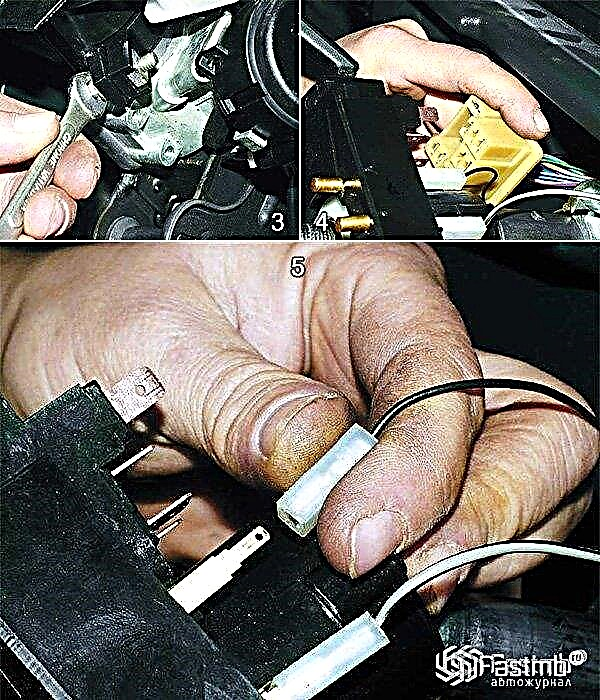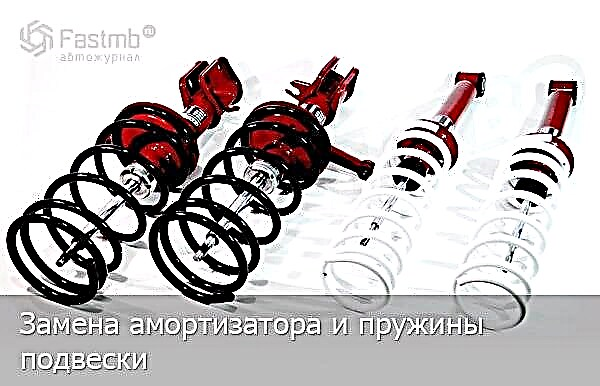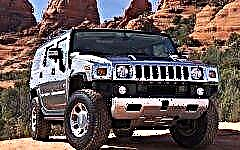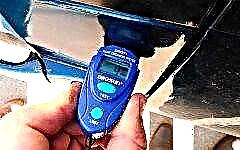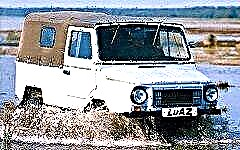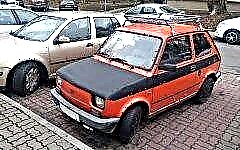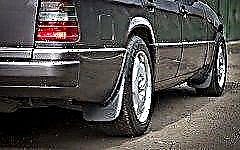

The content of the article:
- What are "dirt protectors" for?
- Types of products
- Choosing mud flaps
- Installation process
- How to clean mud flaps
If you have a car, SUV or truck, installing mud flaps for it will definitely be useful. What you need to know about mudguards?
What are mud flaps for?

This car accessory helps prevent dirt and water from entering sensitive vehicle parts that are prone to rust and corrosion.
Mud flaps are also called mud flaps or fuses. They may be called differently, but their main purpose is to help protect the vehicle from debris and various road conditions that you may encounter. This is especially important when your tires are constantly in contact with dirt, rocks, salt, water and other elements on the road.
But, like any other part of the car, the mudguard tends to wear out and break. Therefore, any car owner can face the problem of replacing and installing mud flaps. If this is your specific case, then below you can find some useful tips on how to properly install mud flaps on your own, without resorting to the help of car service technicians.
Attaching dirt protection devices is a very simple and quick process, especially when these parts are universal, i.e. suitable for all car models. This means that it is quite possible to do without a trip to a car service, because even a woman can cope with the installation problem.
But before carrying out the installation of "mudguards", you need to purchase new mud flaps.
What models to choose among the many presented at the car markets?
Mud valves are also recommended for off-road vehicles, as these vehicles typically operate in harsh road conditions and are always in contact with rocks, mud and other road debris.
There are different models of mudguards - they are available in different shapes, sizes and colors, as well as in the materials used.
Types of products

There are two main types of mudguards:
- universal;
- individual.
The first option is suitable for almost every car, but their design is not very sophisticated. These models have the shape of a black rectangle that the driver installs on his car. The most important advantage is the low price. But on the other hand, versatility is also a disadvantage, because mud flaps do not fully cope with their task on every machine.
Customized products are made by machine manufacturers and have a higher price tag. If the universal "mudguards" absolutely do not fit into the overall design of the car or do not fulfill their role, then the cost of purchasing individual mudguards is quite appropriate. Usually, auto retailers do not sell these models.
Also, mudguards differ in the materials from which they are made:
- polyurethane;
- rubber;
- plastic.
All product variants are made with a protective stop that prevents particles from entering while driving. Plastic splash guards are commonly found on passenger cars, while rubber flaps are commonly found on trucks and heavy vehicles.
Plastic railings are strong enough for light vehicles. They can withstand a variety of weather conditions and prevent road debris that can dent any part of the vehicle. But in very severe frosts, some of them are damaged due to their fragility.
On the other hand, rubber material is just as strong as plastic, but more flexible, so larger vehicles will better provide more coverage.
Hard dirt protectors can get stuck on tires, especially for larger vehicles at high speeds. Rubber ones can "float" thanks to their flexible design. But such accessories are not durable and their service life usually does not exceed one season, after which they need to be replaced.
Polyurethane mud flaps are ideal for car owners. They are certainly more expensive than rubber and plastic models, but they have good technical performance under any operating conditions.
How to choose mud flaps

For cars, trucks and SUVs that have just entered the road, dirt and water can be a threat. Dirt not only covers the sides and rear of the vehicle, but can also be a problem for any vehicles following the vehicle. Choosing quality splash protection systems is a good solution.
When comparing different mudguard options, there are a few things to consider, including material thickness, overall weight (and any emblems or decorations that add weight), and overall styling. Of course, you first need to make sure they fit your vehicle.
Here are a few things to consider when choosing new mudguards:
- The size. Mudguards are made to suit different car models, but you need to make sure the kit you are looking at is the right size for your requirements;
- Material. Most splash systems are made of durable rubber and are designed to hang under the vehicle. However, some are made of hard plastic, are shorter, and have fewer decorations or designs;
- Mudguards weightwhich you choose is an important metric because it affects performance. The heavier the mud protection, the more resilient it will be, preventing water, dirt and sand from harming your vehicle. Metal emblems can add even more weight and stability;
- Style. Fitting mud flaps can also be a great way to add some special charm and status to your car. You can choose from several options, from a specific model to patriotic emblems, etc.
How to install mud flaps

Mudguards can usually be installed in one of two ways: without drilling, or by drilling some of the required bolt holes.
Installation of protective platforms "without drilling" on the car
While it is recommended that you follow the instructions for your specific make and model of mudguard, the general steps for installing “no drill” mudguards are as follows:
- Prepare the wheel area. Clean the areas where the mudguards will be installed.
- Create a space between the tire and the wheel. Turn the front wheels fully to the left for maximum tire-to-block clearance.
- Check the placement. Verify that the valves will work for your vehicle by holding and comparing them to the shape and fit of the available space and checking the "right" or "left" mark for correct placement.
- Find the holes. Your vehicle must have a hole drilled in the wheel block for the mudguards to work. Find these holes and remove the screws that are currently installed.
- Place the flaps in place. Slide the splash flaps back into place and reinstall the screws in the holes in the well to install the splash flaps without fully tightening.
- Tighten the screws. Adjust the position and angle of the flap and fully tighten the screws.
- Install any additional screws, nuts, or bolts that may have been installed with the mudguards.
Note: If a hex nut was provided, be sure to install it between the mudguard and the wheel wheel.
Installation of "dirt protectors" to be drilled
To install mud flaps that require drilling holes in the car, you need to do the following:
- Clean the area of the wheel where the mudguards will be installed.
- Create a space between the tire and the wheel. Turn the front wheels fully to the left for maximum tire-to-block clearance.
- Verify that the valves will work for your vehicle by holding and comparing them to the shape and fit of the available space and checking the "right" or "left" mark for correct placement.
- Mark where to drill holes. If your car doesn't have the necessary factory drilled in the wheel block for your mud flaps to work, use the mud flaps as a template and clearly mark where the drill holes are needed.
- Drill holes based on the template you created.
- Install the flaps. Move the flaps and install the screws, nuts and bolts in the holes in the well to install the mudguards without fully tightening.
- Adjust the position and angle of the flap and fully tighten the screws.
Dismantling of damaged "dirt protectors"
First, the wheel arch and mudguards must be thoroughly cleaned of dirt with water and a rag. This work should become a habit, because this extends the life of the products.
After finishing cleaning the mudguards, do not rush to remove them, let them dry out a little. After removing the mudguards, degrease the installation site with alcohol to ensure a more secure attachment of the mudguard to the wheel arch.
How to clean mud flaps

"Dirt protectors" are not difficult to clean. Dust can be wiped off easily, while tougher dirt can be washed off with soap and water. Mud flaps should be washed frequently to avoid the formation of a large layer of dirt.
But you also need to follow some rules to help increase the life of these accessories:
- When cleaning, the water should be at the same temperature. There is no need to allow for contrast, i.e. alternating hot and ice water - this can damage the integrity of the products.
- After cleaning, mudguards and wheel arches should be allowed to dry well, washing is best done shortly before driving.
- Choose detergents with care and rinse thoroughly.
Conclusion
Buying mud flaps is a great investment for any vehicle. It is an inexpensive accessory that will save you money and time in the future.
Installing mudguards on a car is quite quick and simple. The most important thing is to choose the right new accessories that perfectly match the design of your machine. By following these tips, you will get the highest quality result from the installation and operation of "dirt protectors".

